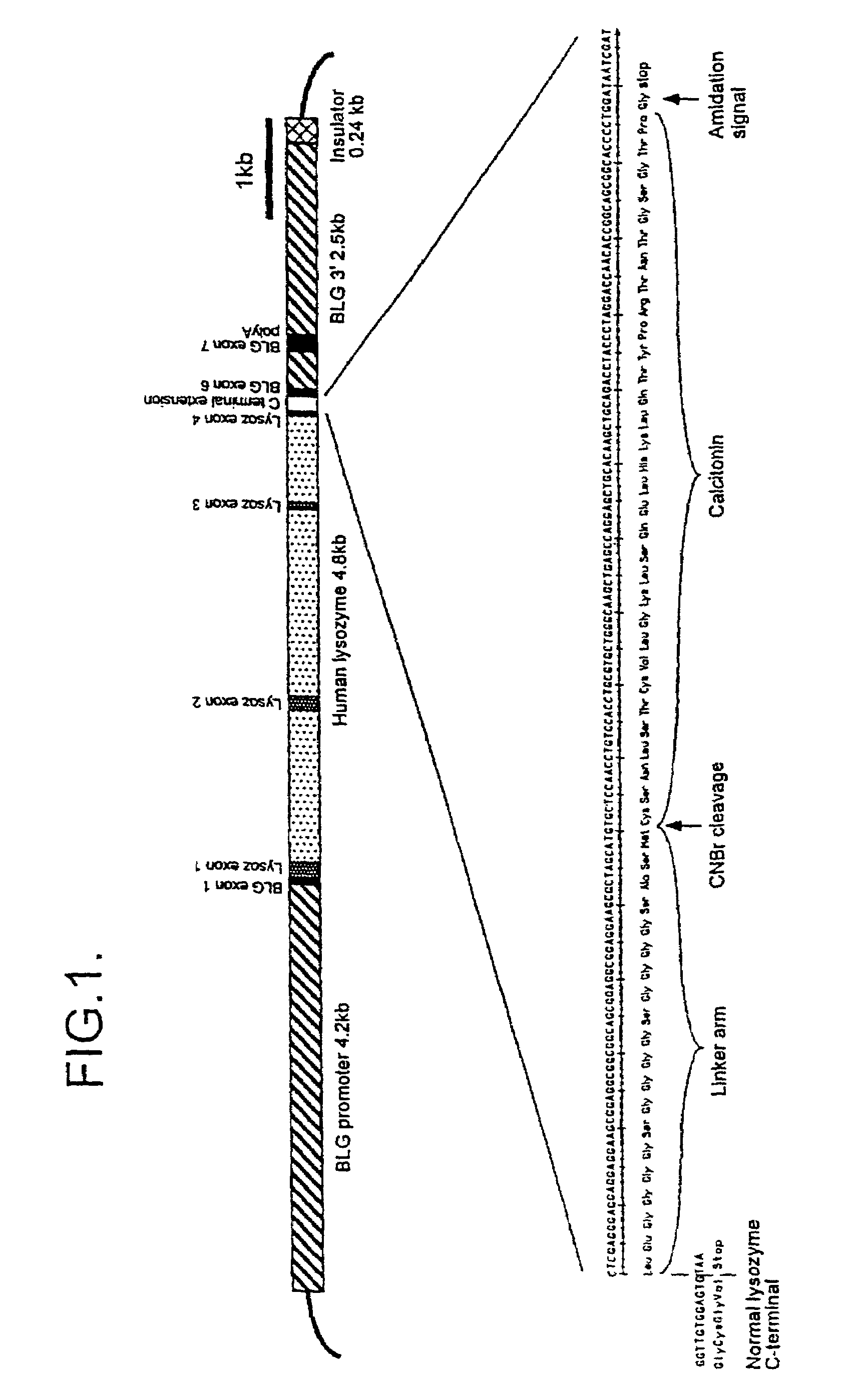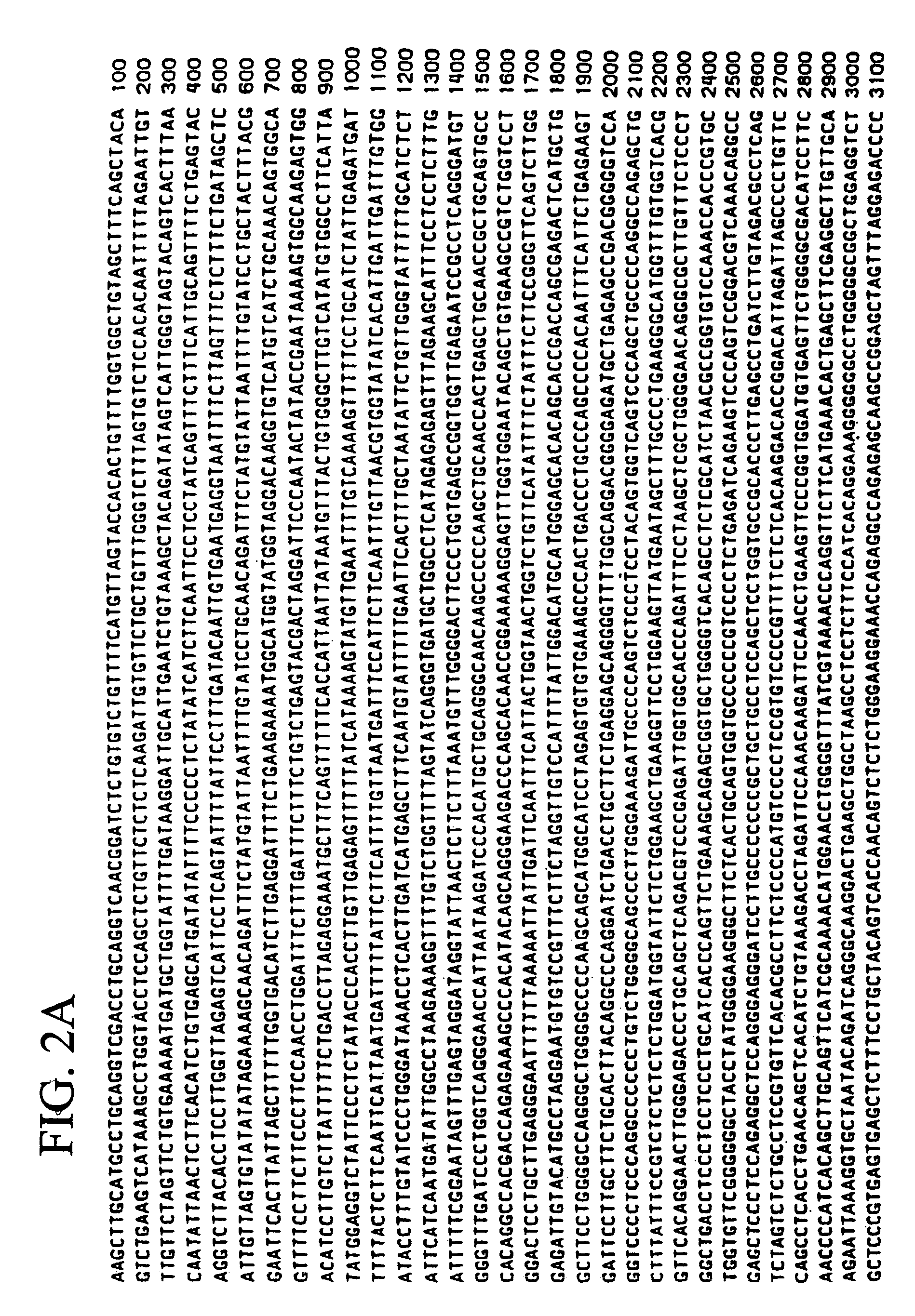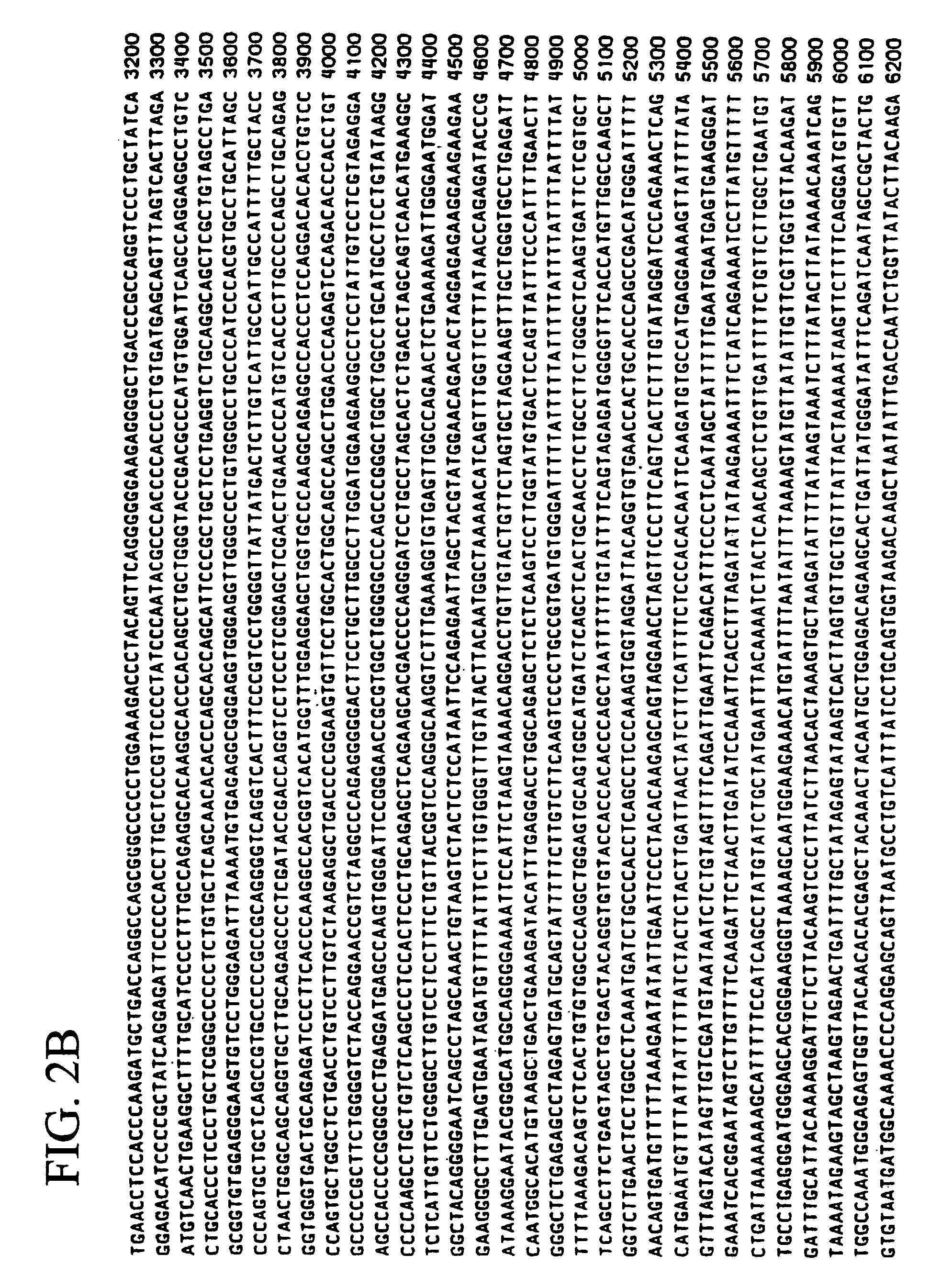Fusion proteins incorporating lysozyme
a technology of lysozyme and fusion protein, which is applied in the direction of enzymes, animal/human proteins, biochemistry apparatus and processes, etc., can solve the problems of not always appropriate for peptide production, high cost of direct chemical synthesis of peptides, and inability to recombinant dna technology
- Summary
- Abstract
- Description
- Claims
- Application Information
AI Technical Summary
Benefits of technology
Problems solved by technology
Method used
Image
Examples
example 1
A Comparison of Expression Levels in Mice Using α-Lactalbumin and Lysozyme Fusion Proteins Both Joined to Calcitonin Via a Cyanogen Bromide Cleavable Linker
[0082]Two constructs were designed to express calcitonin fusion proteins. The first termed pCALM, was designed to express a human alpha-lactalbumin / salmon calcitonin fusion protein in the milk of transgenic animals. This fusion protein allows the release of calcitonin from the end of a linker arm fused to the alpha-lactalbumin C terminal by cyanogen bromide (CNBr) chemical cleavage.
pCALM Structure
pCALM consists of:
[0083]1. A 4.2 kb region comprising the ovine b-lactoglobin (BLG) promoter and 5′ untranslated region (UTR).[0084]2. A 2069 bp region comprising the complete coding region of the human alpha lactalbumin gene corresponding to bases 750 to 2819 of the human alpha lactalbumin sequence (EMBL+Genbank database, accession number: X05153), previously derived from a library of cloned human genomic DNA in bacteriophage lambda.[00...
example 2
Production of a Human Lysozyme—Glucagon-Like Peptide 1 (GLP-1) in the Milk of Transgenic Rabbits
Details of the GLP-1 construct:
[0104]A construct termed pGLUC-1 was designed to express a human lysozyme / human glucagon-like peptide 1 GLP1 fusion protein in the milk of transgenic animals. This fusion protein allows the release of GLP1 from the end of a linker arm fused to the lysozyme C terminal by enterokinase enzymic cleavage.
pGLUC1 Structure
[0105]The structure of pGLUC1 is identical to pCLYSM, as described in example 1, apart from the C terminal extension to the lysozyme protein. pGLUC1 consists of:[0106]1. A 4.2 kb region comprising the ovine b-lactoglobin (BLG) promoter and 5′ untranslated region (UTR).[0107]2. A 4.8 kb region comprising the complete coding region of the human lysozyme gene corresponding to bases 519 to 5344 of the human lysozyme sequence (EMBL+Genbank database, accession number: X14008), derived by polymerase chain reaction (PCR) amplification of genomic DNA prepa...
example 3
Analysis of the Expression in Sheep of a Lysozyme Fusion Protein Joined to Calcitonin Via an Enterokinase Cleavable Linker
[0123]A construct, designated CALC11, was designed for the expression of a calcitonin fusion protein in the milk of transgenic sheep. This fusion protein allows the release of calcitonin from the end of the linker arm fused to lysozyme by incubation with the protease enterokinase.
[0124]The structure of the CALC11 construct is identical to that described for pCLYSM except that the CNBr cleavage site (methionine) is replaced by an enterokinase cleavage site (aspartic acid-aspartic acid-aspartic acid-aspartic acid-lysine)(SEQ ID NO: 3).
[0125]A CALC11 transgenic sheep was generated by nuclear transfer as described in WO 97 / 07669 and WO 97 / 07668. Milk obtained from induced lactation of this animal was analysed by a combination of SDS-PAGE and Western blotting.
[0126]FIG. 9 shows an SDS-PAGE gel (Coomassie Blue stained) of milk obtained from the sheep expressing the lys...
PUM
| Property | Measurement | Unit |
|---|---|---|
| mass | aaaaa | aaaaa |
| pH | aaaaa | aaaaa |
| mass | aaaaa | aaaaa |
Abstract
Description
Claims
Application Information
 Login to View More
Login to View More - R&D
- Intellectual Property
- Life Sciences
- Materials
- Tech Scout
- Unparalleled Data Quality
- Higher Quality Content
- 60% Fewer Hallucinations
Browse by: Latest US Patents, China's latest patents, Technical Efficacy Thesaurus, Application Domain, Technology Topic, Popular Technical Reports.
© 2025 PatSnap. All rights reserved.Legal|Privacy policy|Modern Slavery Act Transparency Statement|Sitemap|About US| Contact US: help@patsnap.com



